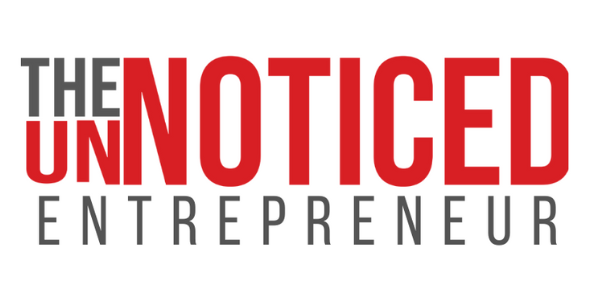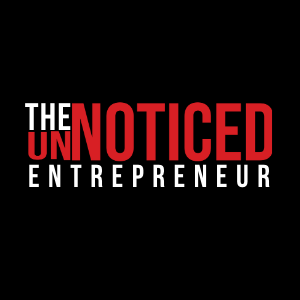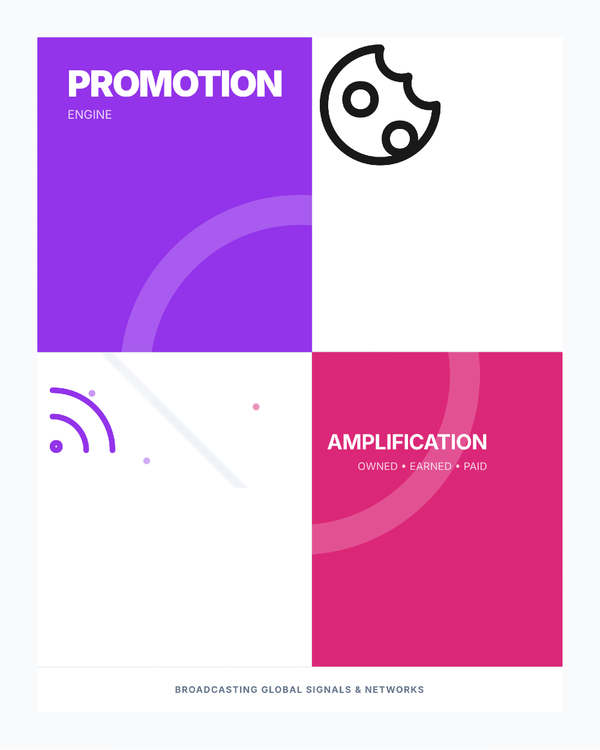Entrepreneurs step by step guide on how to write a press release and custom GPT.
68% of businesses experience improved visibility from published press releases

Whether you're launching something new, announcing an important update, or covering a crisis, knowing how to write a press release is a useful skill. In this article I'll explain the key elements of a press release, and how to write one. I'll touch on how to send your release out, and I've also included a custom GPT and also a prompt for you to use in your LLM like ChatGPT or Claude.
What is a press release and why it matters
A press release is the document which says that you've done something that will make a difference to others. Too many companies issue press releases talking about themselves, and forgetting the "what is in this for others."
The release matters because it is still the format that journalists expect to receive information.
Press releases follow a specific format that journalists recognize and trust. They typically range from 300-800 words and present information in a factual, concise manner that supports easy media coverage.
68% of businesses experience improved visibility from published press , proving their effectiveness in building credibility with audiences. [4]
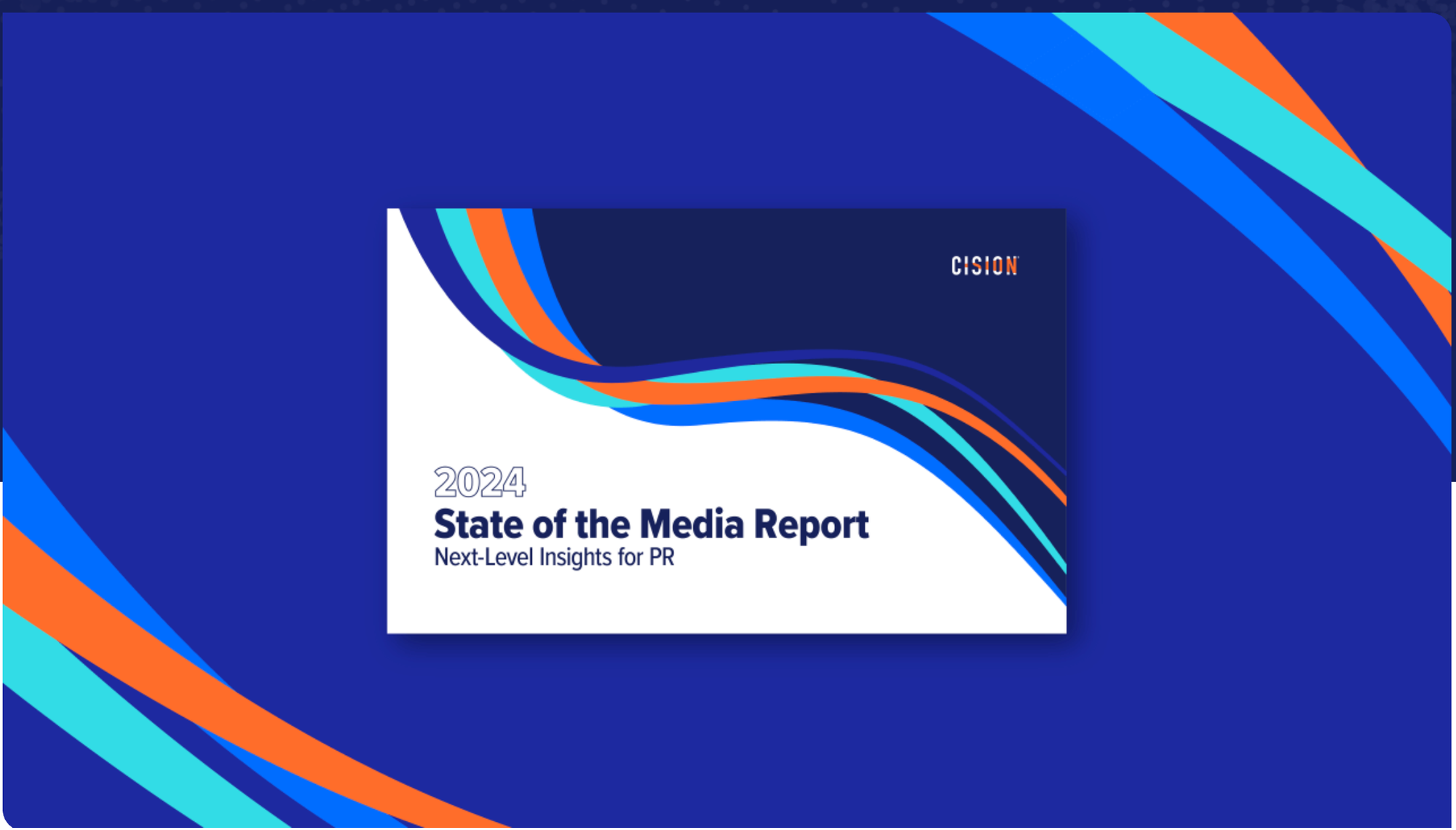
When to use a press release
Not every business update warrants a press release. Knowing exactly when to issue one makes the difference between getting media coverage and being ignored. Here are the key moments when a press release is most effective:
- Launching new products or services
- Announcing partnerships or collaborations
- Unveiling major updates or feature enhancements
- Sharing significant company achievements or milestones
- Managing a crisis or addressing public concerns
Follow the Standard Press Release Format
Formatting your press release correctly is crucial if you want journalists to take you seriously. Studies show that 61% of journalists rank original research as their most-wanted content [6], therefore sticking to standard press release structure helps them quickly assess your story's value.
What's included in a press release?
When crafting your announcement, it's essential to include the 5 Ws:
- Who is releasing the X?
- What is it?
- When is it being released?
- Where can customers purchase it?
- How does it change things?
- Why does it matter?
Headline and subheadline that grab attention
“On the average, five times as many people read the headline as read the body copy. When you have written your headline, you have spent eighty cents out of your dollar.” David Ogilvy, Advertising legend.
What's true for advertising is also true for media relations. The headline is your press release's main chance to get picked up by the media. Your headline must do triple duty: grab attention, show value, and make the journalist want to find out more. Action words like "reveal" and "unveil" drive more engagement because they signal something new [6]. For your subheadline, expand on your headline with additional context without repeating information.
Dateline and 'standfirst'
Place your dateline at the beginning of your first paragraph, including city and date: "NEW YORK, June 26, 2025 —". This immediately establishes when and where your news is happening.
Your 'standfirst,' or lead paragraph, should answer the 5Ws (who, what, when, where, why) within the first few sentences. Journalists can receive upwards of 50 releases per day, and so they scan headlines and leads first, so prioritize your most important information here using the "inverted pyramid" approach.
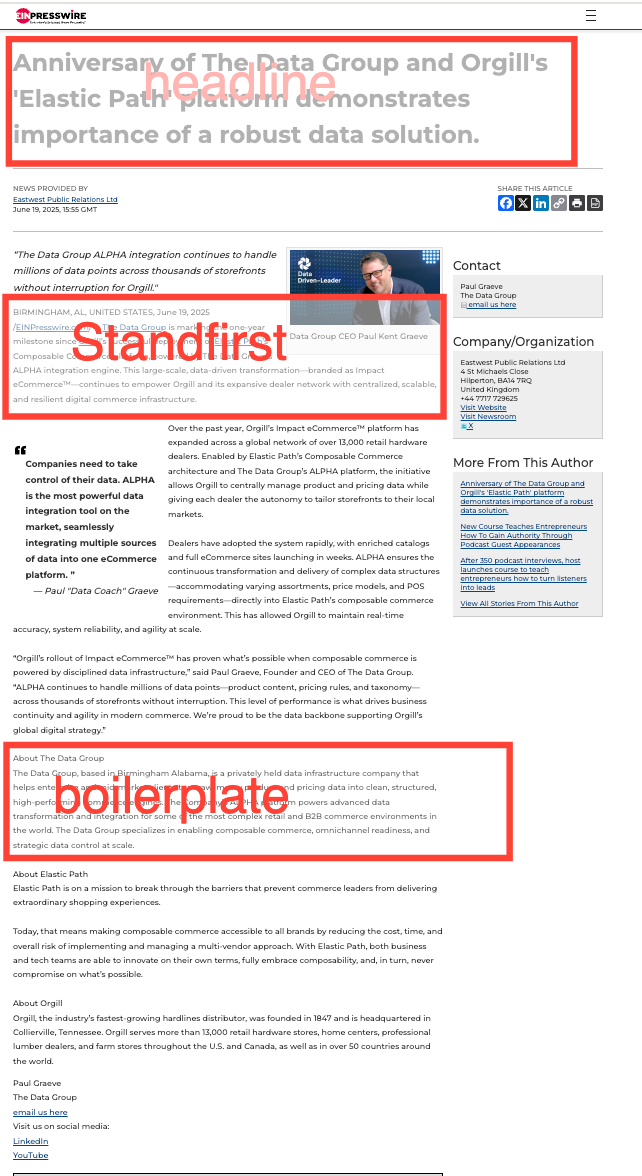
Body content with quotes and details
Keep your body paragraphs short—about 2-4 sentences each [8]. Use bold strategically to highlight key points, making your release scannable. Quotes add a human element and credibility to your announcement. Above all, make sure they provide additional insight rather than repeating facts. Consider formatting quotes distinctly by bolding the speaker's name and italicizing their words [8]. Some of the newswires, like EIN Newswire, provide an opportunity to have a dedicated photo and quote from the spokesperson in a call out box.
Boilerplate and contact information
Your boilerplate is a standardized paragraph (around 100 words) that provides key information about your organization. In essence, it should include your company overview, mission statement, core products/services, and achievements.
Specifically, conclude with clear contact information—name, email, and phone number of your media contact person—making it easy for journalists to reach out for more details.
Write and Optimize Your Press Release
Creating content that peaks the interest of journalist requires more than following a format. Now that you have your structure in place, let's focus on crafting compelling content that drives results.
Focus on your product's unique value
Identify features that solve customer problems in ways competitors don't. Instead of generic claims, showcase specific benefits that directly impact users. For instance, don't just say your project management tool is "innovative" – explain how it boosts productivity with concrete examples. Additionally, weave market trends into your story to show why your product matters now.
Use simple, clear language
Avoid technical jargon that might confuse readers. Keep sentences short (15-20 words) and paragraphs brief (2-4 sentences). Write in active voice – say "The team will present the petition" rather than "It is hoped the petition will be presented." Furthermore, explain acronyms in full when first used and skip unnecessary buzzwords like "leverage," "synergy," or "spectrum."
Include visuals like images or videos
Press releases with visuals see up to 9.7x more views than plain-text releases [10]. Include high-resolution product photos, screenshots, or videos demonstrating key features. Don't just generate images using an LLM, try to find real photos, and ideally of people involved.
Remember to provide captions for context and ensure all links to visual assets work properly. Ideally, lead with your strongest visual since some outlets may only use one image. Pro tip is to ensure that the file name is the same as the subject of the image, including your company name...as that's meta data too. e.g. personname_companyname.png
Proofread and edit for clarity
Before sending your press release, take time to review it thoroughly. Print it out and read it, or upload it to another AI checker. I like to use Grammarly as that picks up odd grammar and if you have the pro version, it makes recommendations.
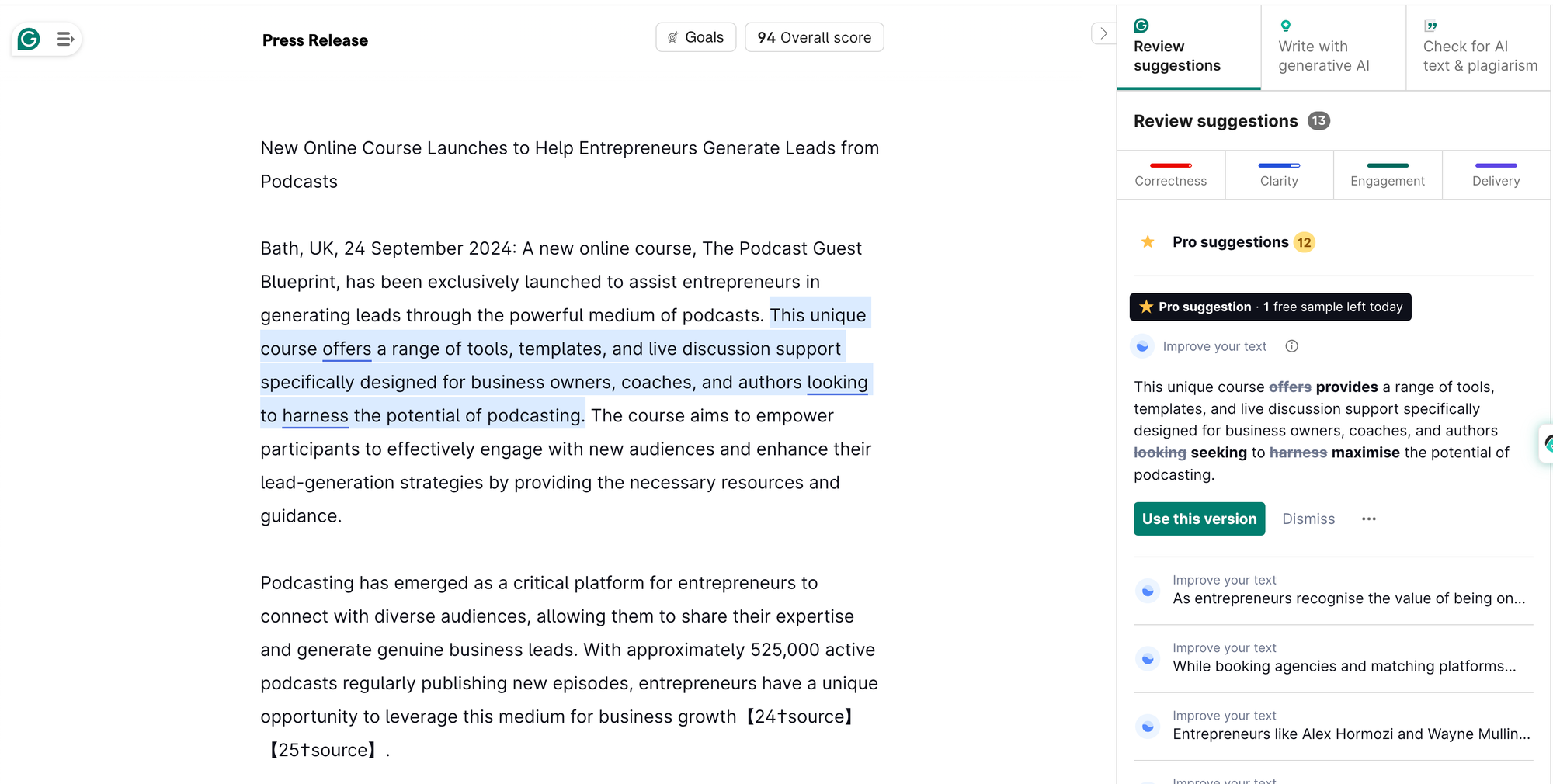
Reading aloud helps identify awkward phrasing or poorly worded sentences. For maximum concentration, eliminate distractions and consider backwards reading to catch overlooked mistakes. Finally, have someone else review it for a fresh perspective. If you can't do that, you can also upload your release into another LLM e.g. Perplexity or Claude so that they check one another.
Importantly,...if you do use an LLM to write your release and it provides citations, check the verity of those as LLM's are famous for making things up. The media will not run your story if it contains false citations, and indeed will remove any links because they will not want to lose the traffic from their site.
Distribute and Promote Your Press Release
After crafting your perfect press release, your focus must shift to getting it in front of the right people. It's become really easy to find journalist contacts, but that doesn't mean they will look at your emails. This is why companies engage agencies, because the journalists have already "safe listed' their email domain.
Build a list of relevant journalists
Creating a targeted media list is the foundation of successful PR. Quality trumps quantity when selecting contacts, unless you're a listed company and your goal is compliance. Start by researching which journalists cover your specific industry or topic using media databases like Roxhill, Prowly, MuckRack. These are paid for services, but they will save you hours of time.
The most effective lists include not just basic contact information but also details like:
- Recent articles they've published
- Their preferred content styles
- Publication metrics and reach [14]
Personalize your pitch emails
Journalists receive hundreds of pitches daily,ie. the email which has the release attached to it, yet only 7% are relevant to their audience [14]. Don't waste their time or yours! Sounds obvious really.
Only send releases to media outlets who have readers who will be interested in your story.
Stand out by crafting subject lines between 10-20 characters, [15]. Keep your email pitch under 100 words—these perform up to 4x better than longer ones [15]. Additionally, include 1-5 images in your pitch email for optimal clickthrough rates [15].
If you use platform like Prowly, the software will personalise the emails for you; it's a mail merge which saves a lot of time. In the case of Prowly, there is also a AI press release writer and pitch writer.
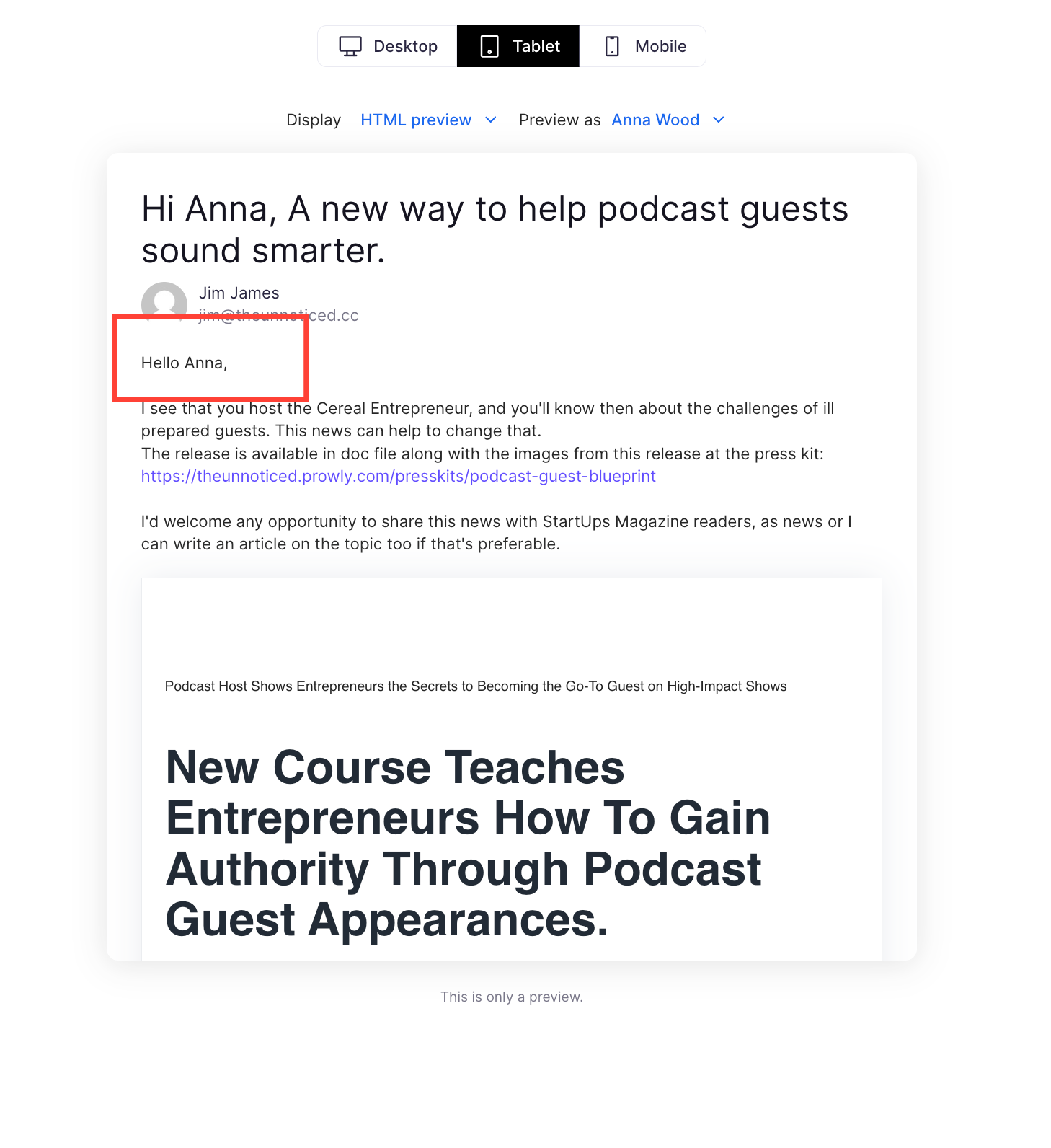
Use press release distribution services
One option is to send the press release to you chosen handful of media, say the top 10 in your industry or town, and then to use a distribution service to get more reach.
Newswire Services (PR Newswire, Business Wire) connect directly to newsrooms, typically costing £397-£1,588 per release [2]. Meanwhile, Online Distribution Platforms (PRWeb, eReleases) focus on digital channels at £78-£316 per release [2]. For those on tight budgets, Free Distribution Services like PRLog offer basic options without financial commitment [2].
[I've written a case study on how I used EIN Newswire here.]

Track performance and follow up
Don't simply distribute and move on. Ideally you want to secure placement of your story, and even possibly an interview of the placement of an article. When following up with journalists, timing is critical. If you are sending the release from your own email, then you can call a day later to check if they received it. Keep follow-ups brief, and go in with the line;
"Just checking you got my email, and if there is anything else that you may need."
Your goal is not to send a press release, it is to secure coverage. If you want to get the busy journalist interested in your story, follow up! If you want to guarantee coverage then you pay for a newswire service as I've covered in the article mentioned above.
Using AI Yourself
If you don't want to subscribe to one of the PR platforms like Prowly, you can write a simple release yourself.
Prompt:
Here’s a ready-to-use prompt that you can copy and paste into ChatGPT, Gemini, Claude, or another LLM to generate a tailored press release article based on the guide:
'You're a seasoned business writer and PR strategist. Write a press release for [insert your product, service, or announcement here].
Ensure the press release includes:
- A compelling headline and subheadline (51–75 characters)
- A dateline and lead paragraph with the 5Ws (who, what, when, where, why)
- A well-structured body with short paragraphs and include:
- quote from the spokesperson
relevant details
at least one industry statistic including citations
- quote from the spokesperson
- A concise boilerplate about the company
- Clear contact information
- At least one suggested visual (image or video)
Maintain a professional tone, write in active voice, and ensure the release is 600–800 words long.'
A Custom GPT
I've created a custom GPT which you can also try. You will need to answer some questions, but then this will write a release for you.
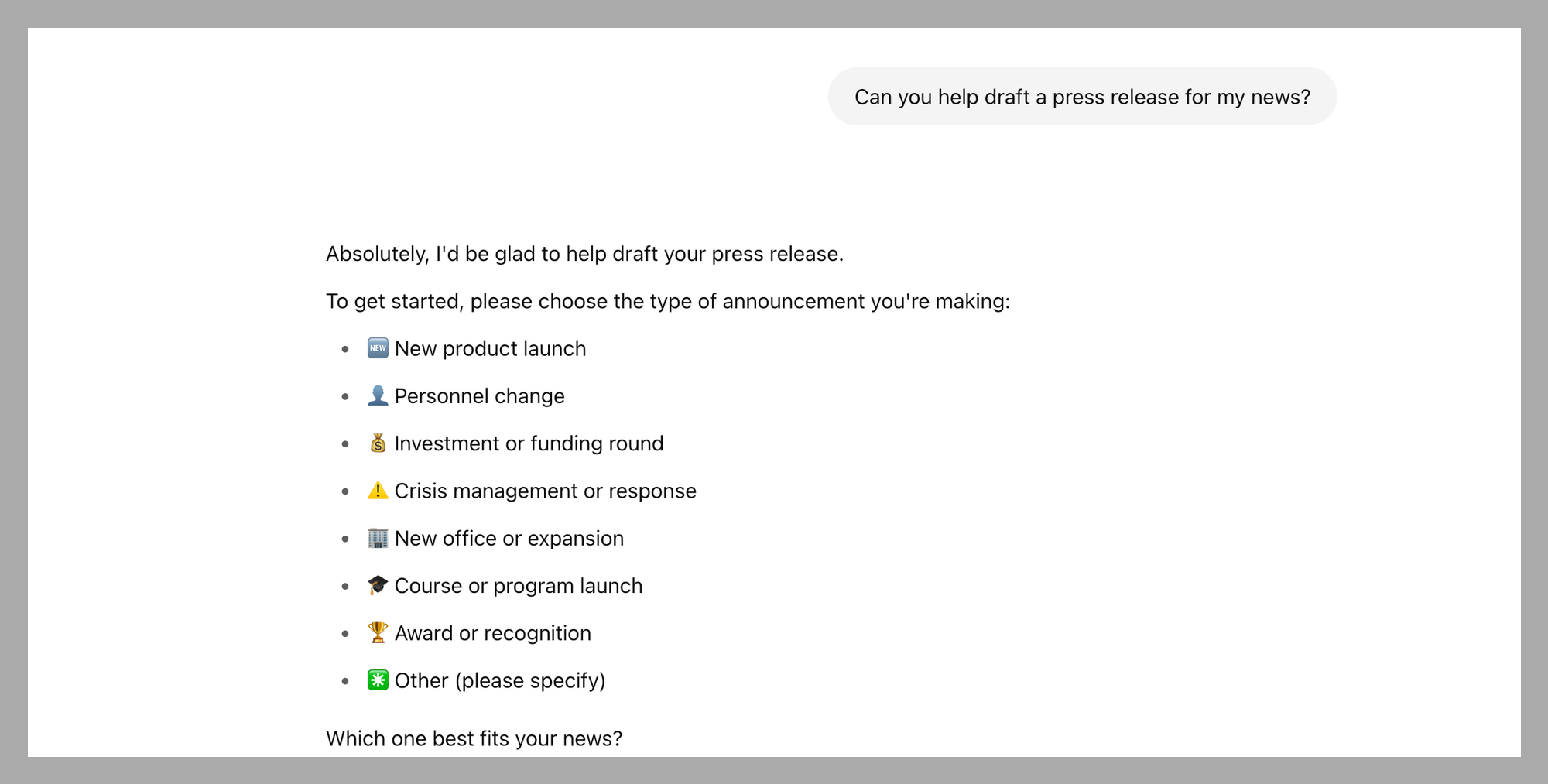
Conclusion
A press release is a means to an end. To earn you and your company exposure. The standard format—compelling headline, informative lead paragraph, detailed body, and professional boilerplate—serves as your foundation for success.
Journalists are always looking for stories. But they are time poor. Write a release which makes their day, but doesn't take up much of it.
Try this GPT to write your release.
FAQs
Q1. How can I make my press release stand out to journalists? To make your press release stand out, focus on a compelling headline (51-75 characters long), use clear and simple language, include relevant visuals, and highlight your product's unique value. Ensure your lead paragraph answers the 5 Ws (who, what, when, where, why) and follow the standard press release format.
Q2. What's the best way to distribute my press release? The best way to distribute your press release is to build a targeted list of relevant journalists, personalize your pitch emails, and use press release distribution services. Consider using newswire services for wider reach or online distribution platforms for digital channels. Follow up with journalists a few days after sending your release.
Q3. How long should my press release be? A typical press release should be between 300-800 words. Keep paragraphs short (2-4 sentences each) and use the "inverted pyramid" approach, placing the most important information at the beginning. Use bold text strategically to highlight key points and make the release easily scannable.
Q4. When is the right time to send out a press release? The best time to send out a press release is when you have genuinely newsworthy information to share, such as launching new products or services, announcing partnerships, unveiling major updates, sharing significant company achievements, or addressing public concerns. Timeliness is crucial, so ensure your news is current and relevant.
Q5. How can I measure the success of my press release? To measure the success of your press release, track key metrics such as media coverage, audience reach, engagement, and search engine rankings. Use analytics tools to monitor these performance indicators. Additionally, pay attention to the number of journalist inquiries, website traffic increases, and any boost in sales or leads that can be attributed to the press release.
